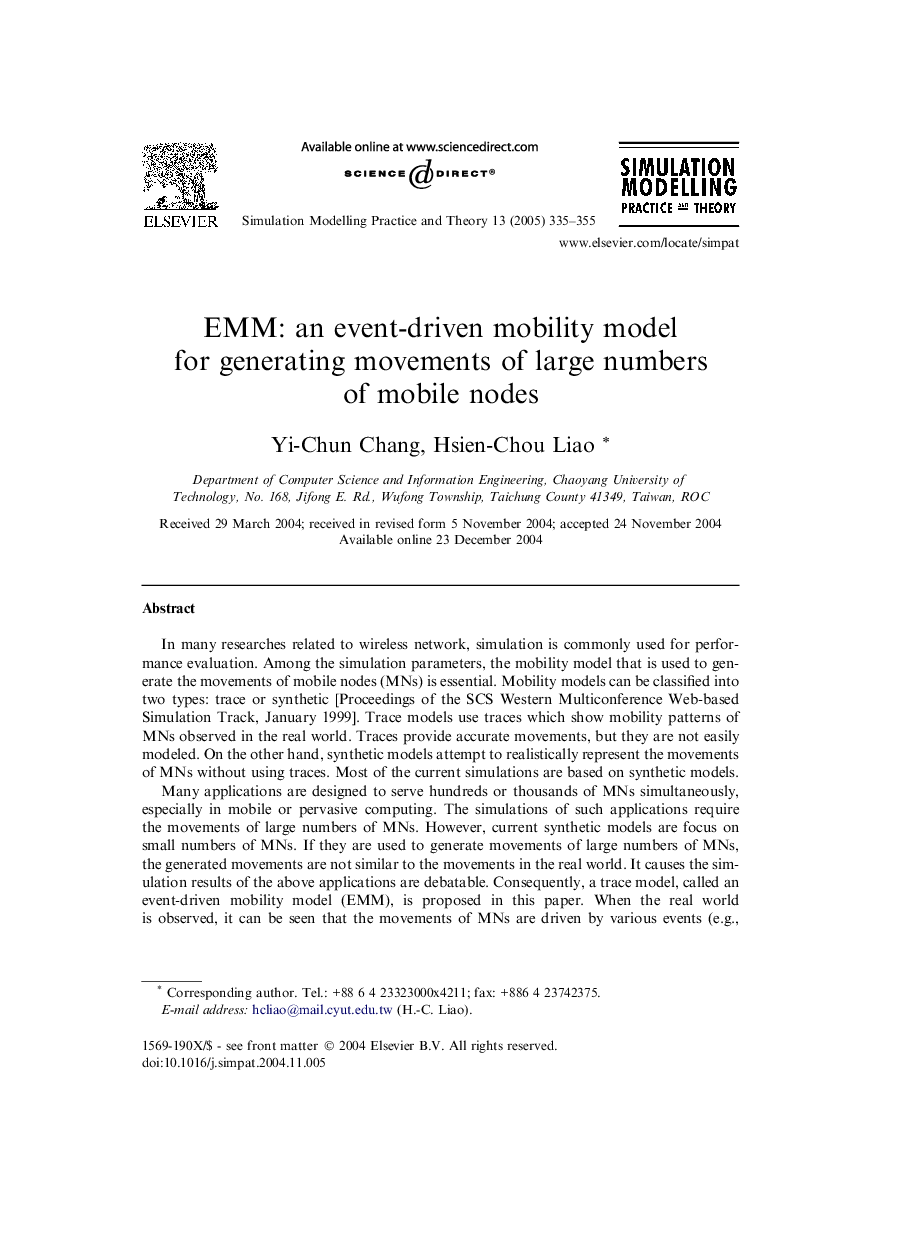| Article ID | Journal | Published Year | Pages | File Type |
|---|---|---|---|---|
| 10348800 | Simulation Modelling Practice and Theory | 2005 | 21 Pages |
Abstract
Many applications are designed to serve hundreds or thousands of MNs simultaneously, especially in mobile or pervasive computing. The simulations of such applications require the movements of large numbers of MNs. However, current synthetic models are focus on small numbers of MNs. If they are used to generate movements of large numbers of MNs, the generated movements are not similar to the movements in the real world. It causes the simulation results of the above applications are debatable. Consequently, a trace model, called an event-driven mobility model (EMM), is proposed in this paper. When the real world is observed, it can be seen that the movements of MNs are driven by various events (e.g., meetings, dining, and so on). This allows the movements to be deemed as “move-stay” mobility pattern. A modified colored petri-net is used to model the move-stay pattern. The current design of EMM is based on such pattern of students on a campus. In our experiment, 6780 movements of students in one day were generated systematically. The statistics of the generated movements were used to determine the deployment of wireless access points. The result shows that EMM is useful for generating movements of large numbers of MNs.
Related Topics
Physical Sciences and Engineering
Computer Science
Computer Science (General)
Authors
Yi-Chun Chang, Hsien-Chou Liao,
